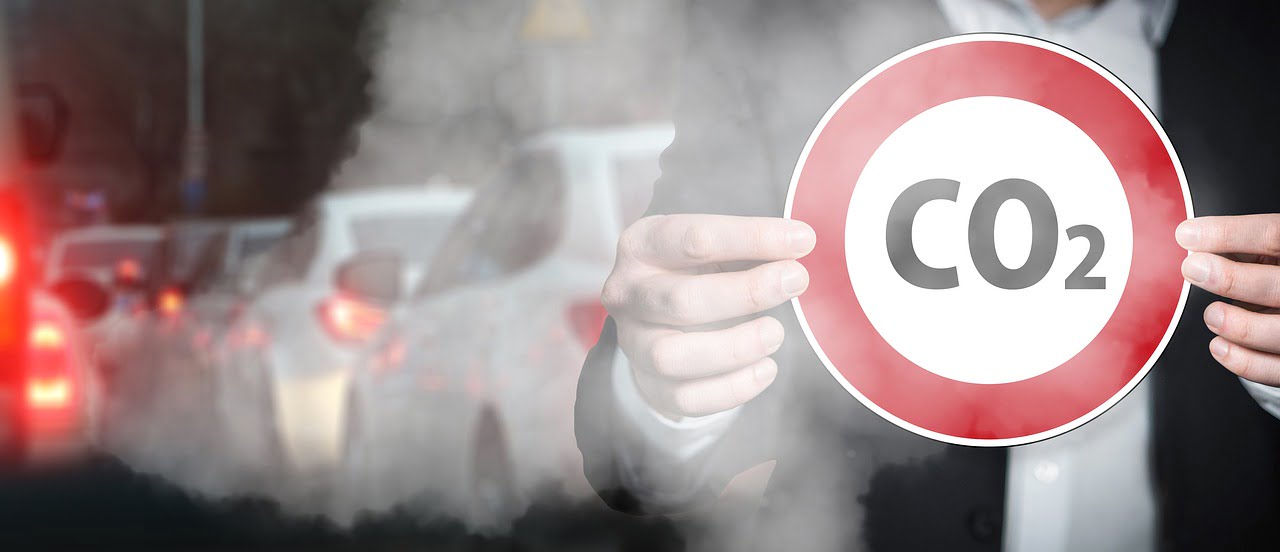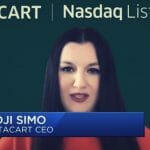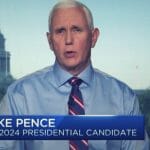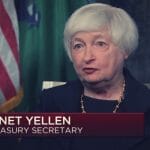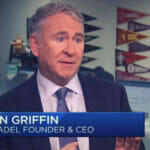Following is the unofficial transcript of a CNBC interview with Dow Inc (NYSE:DOW) Chairman and CEO Jim Fitterling at CNBC’s ESG Impact conference, which took place today, Thursday, October 28th. Video from the interview will be available at cnbc.com/esg-impact/.
Q3 2021 hedge fund letters, conferences and more
Interview WIth Dow Chairman and CEO Jim Fitterling
TYLER MATHISEN: Now for our closing interview as the world's leading plastics company with a portfolio of more than 14,000 products, Dow is in the spotlight for sustainability practices and is taking steps toward a zero-carbon future. Joining us now is Dow’s CEO Jim Fitterling interviewed by “Mad Money” host and “Squawk on the Street” co-anchor, my friend Jim Cramer. Great to have you both with us today. Jim, take it away.
JIM CRAMER: Thank you so much, Tyler. Jim, you have been outspoken as one of the great CEOs in terms of sustainability and net zero. But at the same time as you know when I first met you, you make plastic. And a lot of the younger people say you know what? Doesn't really matter what he does, he makes plastic and plastic is bad for the environment. So before we get into the unbelievable efforts that you've made to save the environment, what do you say to people who say, “Plastic, that's bad. we should be using paper. It's much better. It's much cleaner. It's much more environmental.”
JIM FITTERLING: Well, Jim, great to be here and plastics play an important role in our lives and one of the reasons they've grown to be as big as they are today is because of the sustainable nature of the product. It has the lowest CO2 footprint of any of the alternative packages that are out there. It's completely recyclable and I think the issue that we're trying to deal with right now is one of plastic waste, which is really a waste issue and an infrastructure issue and we're trying to tackle that through alliances like the Alliance To End Plastic Waste and public private partnerships around the world. We are going to take our portfolio to zero Scope 1 and 2 emissions by 2050 and we have announced the first plans to do that. When we do that, it will make plastics the most sustainable product out there.
CRAMER: Alright, so let's talk about the notion that you're the CEO of a company that is got to make a lot of money for shareholders. And at the same time you care passionately about the environment. You're doing some things like you're building a cracker and you can explain that in Alberta, my first reaction is no wait a second. You're building some big plant in some place that is who the hell knows is probably going to cost a fortune and how can it possibly be good for the environment? And yet, that's precisely what you're doing. So can you explain that dual mandate of making money for shareholders but really trying to preserve the environment?
FITTERLING: Yeah, we work in a very big scale and the products that we make, and so when we make an investment, sometimes it's more than a billion-dollar investment and investors want to know that their dividend is safe. They want to know that your balance sheet is good. And that you're going to be able to not only just decarbonize your footprint, but you're going to be able to decarbonize and grow. We made the announcement on Alberta for two reasons. One was because of the policies that are there from both a price on carbon and the ability to capture carbon and sequester it. But secondly, it's based on technology investments and things that we can do. We, we can we have an existing cracker in Alberta and what we do when we make ethylene is we crack ethane. You make ethylene but you also make methane and hydrogen off the back end of the cracker. We will build a new cracker. We will take the back-end products of methane and hydrogen off of both the existing cracker and the new cracker, put it through an auto thermal reformer and make clean hydrogen and that clean hydrogen will fuel the whole complex. I will take the whole complex to zero Scope 1 and 2 emissions with this project. That's 20% of my ethylene and plastics footprint around the world and it will more than triple the amount of product that I make there.
CRAMER: Alright so you’re talking about circularity, sustainability, carbon capture, and at the same time, green hydrogen which people must know is probably got the least footprint of anything on earth, correct?
FITTERLING: Yes, green, well, this is circular hydrogen that's what we would call it. Green hydrogen is, is a little ways away and fairly expensive. But this is taking byproducts off the back end of the crackers and converting them throughout auto thermal reforming into hydrogen so it's actually less expensive than even blue hydrogen. And by doing that, we know that we can generate a return on invested capital of greater than 15% with this investment which for an investor is exactly what they're looking for. How can you give me a return? How can you keep my dividend whole? How can you grow your enterprise and keep a value creating multiple on the company? At the same time, we reduce the tail risk on the company and we move ourselves to green. Over the last 18 months during Covid, we went through 12 sites globally. That is our CO2 footprint and we laid out a plan between now and 2050 to methodically get those sights to zero Scope 1 and 2 emissions, and we earmarked a billion dollars a year. Our depreciation and amortization is about $2.9 billion a year will go to decarbonize and grow the core of the company.
CRAMER: Let's talk about fashion. Something that you and I rarely talk about. Talk about Ralph Lauren. Innovative company, they make clothes, a lot of clothes end up in landfills. There's lots of dyes, lots of things that people don't like in the environment. And then suddenly I read about Dow Open-Source and Ralph Lauren in the same headline, what's going on?
FITTERLING: Well, Ralph Lauren has been a partner through the Olympics and Ralph Lauren obviously is a big user of cotton and to dye textiles, it takes a lot of chemicals and a lot of water and you generate a lot of waste and mainly you do that because you're, you're trying to use heat and pressure to put that dye into the fabric. We worked with Ralph Lauren and we created a product called ECOFAST Pure which really works on the cotton changes, the charge of the cotton, and to dye the cotton, you need 90% less chemicals, 50% less energy, 50% less water, and it's so environmentally friendly that not only would the mills be able to solve their problems, but Ralph Lauren will be able to do something like put color on demand in one of their flagship stores in New York next year so that you can go in and get your Ralph Lauren polo dyed in the store. That would have never been possible without this technology.
CRAMER: Jim, how can we be sure that great things like that scale? How do we be sure that others do like what you're doing in Alberta? What I always fear is the Potemkin village issue, which that it looks good, but it's one off and it's really designed to the cynics would say to hide what else you're up to.
FITTERLING: Well we're working hard right now on policy. I would like to see the United States have policies like Canada. We've been very vocal about we need a global market price on carbon. We need a price on carbon here. We need caps and allowances on CO2 emissions and in an emissions trading system type of scheme, allowances that would reduce over time in line with the targets to get CO2 emissions down. That allows you to bring in the capital markets to make these investments. We also need infrastructure for both hydrogen and for CO2 capture. One of the reasons we went to Canada first is there's a CO2 capture trunk line right there, the Alberta carbon trunk line. We’ll a big contractor into that line and we'll take all the CO2 emissions from that site there. We need to develop that here. We signed on with Exxon and 11 other companies to really create a hub like that in Houston so we need some support from a CapEx standpoint. It’s more expensive to do this from a capital standpoint in terms of incentives but we also need that price on carbon so that the higher cost of doing all this doesn't just get passed on to the consumer.
CRAMER: Now we know that, as you said about plastic, it's easily recycled. I know that some companies do and I know Eastman Chemical talking about is really being maybe the great, the great Savior of the planet to some degree. And what I'm concerned about is in the end, doesn't it take will of people and perhaps government incentives of which I'm sure you talk about all the time with the Alliance To End Plastic Waste to get this thing save, the planet saved and I want to emphasize it's, they’re whole countries Jim, they don't care about this right? Or or if they don’t say they don't care certainly say, you know what, it doesn't matter. And aren't they if there is a so-called villain in the story, the people in countries that simply don't care and dump plastic in our in our sainted rivers and oceans.
FITTERLING: I think what you have seen around the world is plastics have helped deliver fresh food, medicines, many any number of things to a growing economy and a growing population and growing middle class. And in some countries in the world, that growing population and growing middle class has outstripped their capability to deal with waste management. We’re fortunate here in the United States. Our waste management system is actively managed, but we still live in a linear economy. We're, we're not just plastics, but a lot of things people use, they use once and they throw it away. If you want to move to a circular economy, you have to incentivize the circular nature of the recycling of the product. And what we've committed to is we think there are some targets that industry can agree to, for example, if plastics and packaging companies could agree to 30% post-consumer recycled material and all their packages, this would drive demand that would create incentives for people to invest in recycling. If every city or every municipality would have curbside recycling that included plastics instead of excluding it, and we make the investments in digital sorting which are available today and profitable today, to sort those plastics at the recycling facility, we create a stream that can be used to fulfill those targets. And so, we've worked with the EPA for years, 50% recycle mandate and the United States is not out of reach. We just need to get the policies and the investments lined up to go do it. There are a lot of startup companies in this space that have a lot of good technology and there's money flowing into ESG funds like crazy right now. And we're just trying to get project by project up and running, demonstrate that they work and get more municipalities and more governments to sign on.
CRAMER: Well, Jim, you have me as a believer. I've listened to you many times, been able to speak to you many times. I know you are the leader in this area and if others joined you, I think that we wouldn't be talking ESG. We would just be talking about how we clean the planet up every day. Jim Fitterling CEO of Dow, thank you so much sir for coming to our conference.
FITTERLING: Great to see you Jim. Thank you.
